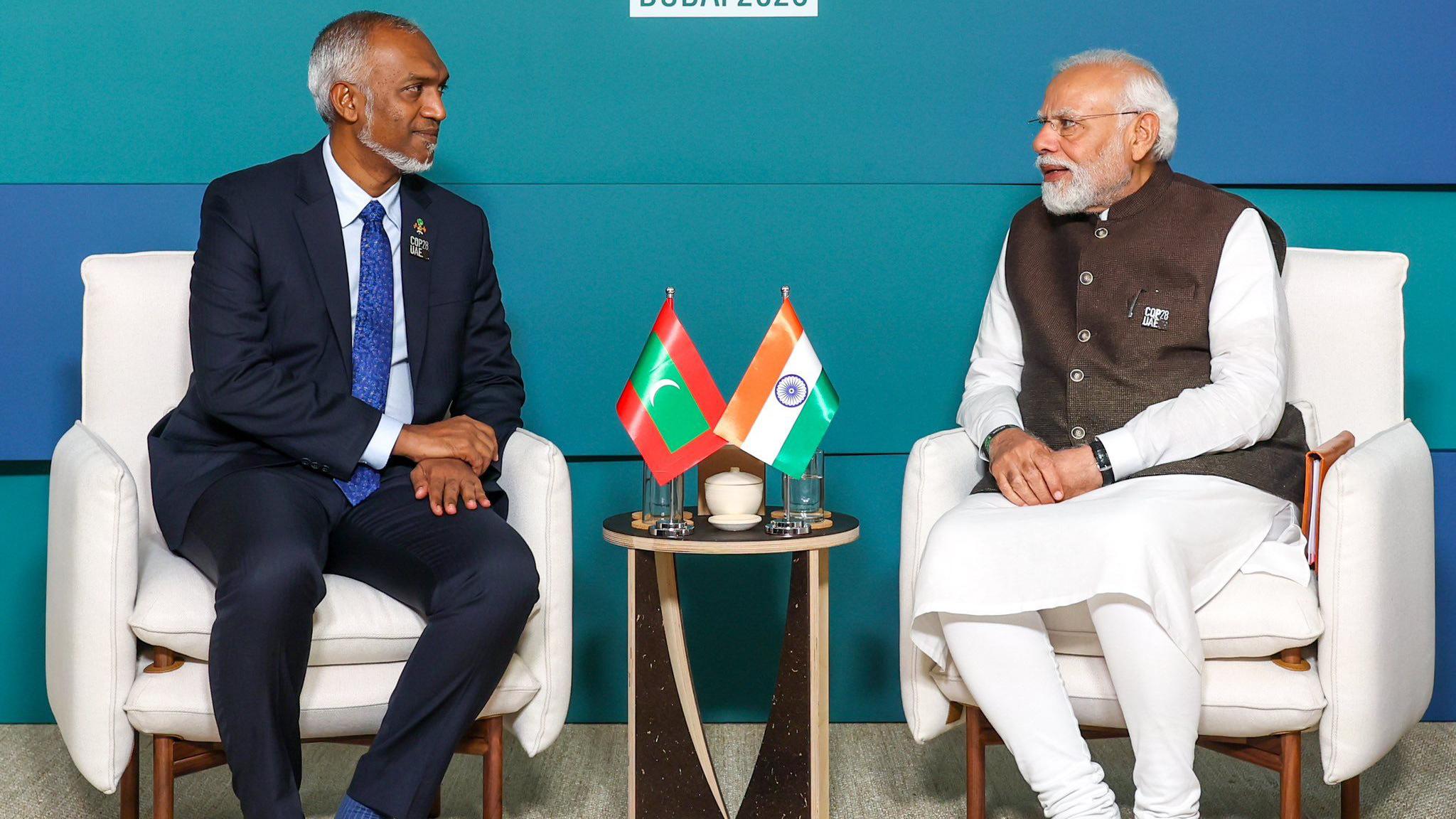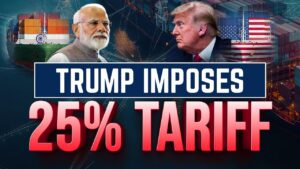I. Introduction
The trade relationship between India and the Maldives has entered a transformative phase in 2025. What was once a steady but modest partnership has now become a strategically significant corridor for essential goods, financial support, and digital innovation. Triggered by record-breaking export quotas, renewed diplomatic efforts, and the beginning of free trade agreement (FTA) negotiations, the bilateral trade landscape is evolving rapidly and with it, the rules of engagement for importers and exporters.
This shift matters now more than ever. The Maldives, facing pressing economic challenges, has turned decisively toward India for stable supply chains and financial lifelines. In return, India is expanding its role as a reliable trade and development partner in the Indian Ocean region. These changes don’t just affect policy, they’re already reshaping the cost, speed, and scope of doing business between the two countries.
In this blog, we’ll walk you through the key developments in the India-Maldives trade relationship and explain how they are reshaping the future of import/export, whether you’re a business owner, policy watcher, or investor looking for opportunity in this growing trade corridor.
II. A Historic Boost in Export Quotas
In a landmark policy shift, India approved the highest-ever export quotas to the Maldives in April 2025, signaling a deepening of economic ties and an assurance of supply-chain stability for the island nation. These quotas cover critical food and consumer staples that are essential for the Maldivian market, including:
- Eggs: 448.91 million
- Potatoes: 22,589 tonnes
- Onions: 37,537 tonnes
- Rice: 130,429 tonnes
- Wheat Flour: 114,621 tonnes
- Sugar: 67,719 tonnes
- Pulses: 350 tonnes
These figures not only represent the largest allocations since the inception of the 1981 bilateral trade agreement but also reflect India’s growing role as the primary food security partner for the Maldives.
What sets this move apart is the policy guarantee: these exports are exempt from any current or future restrictions for the 2025–26 fiscal year. This means importers in the Maldives and exporters in India can operate with a level of predictability and risk protection rarely seen in regional trade.
Logistics have also improved. India has expanded the number of designated ports through which restricted or prohibited items can be shipped from four to six. This reduces bottlenecks, shortens delivery timelines, and improves efficiency for cross-border businesses.
In short, these expanded quotas and streamlined logistics signal a new era of reliability and openness in India–Maldives trade, especially crucial for businesses dealing in essential goods.
III. Game-Changing Agreements Reshaping Trade
Beyond export volumes, 2025 has marked a turning point in India–Maldives trade policy with the introduction of major agreements that will have lasting effects on the region’s import/export dynamics.
1. Free Trade Agreement (FTA) Talks Begin
In July 2025, India and the Maldives officially launched Free Trade Agreement (FTA) negotiations, a milestone that signals a future of reduced tariffs, simplified customs procedures, and expanded market access. For businesses, this could mean lower costs, faster processing, and fewer regulatory hurdles across a broad spectrum of goods and services.
2. Financial Lifelines and Debt Relief
India has also committed ₹4,850 crore (approx. $565 million) Line of Credit to the Maldives, one of the largest single-year allocations in the bilateral relationship. This funding supports infrastructure development, housing, energy, and other national priorities.
In tandem, India’s financial support includes debt restructuring measures that reduce the Maldives’ annual debt service burden by up to 40%, offering much-needed fiscal breathing room and enabling continued investment in trade-related infrastructure.
3. Seamless Digital Payments and Local Currency Trade
India’s UPI and RuPay systems have now been integrated into the Maldivian economy, making cross-border digital transactions faster, cheaper, and more secure. This is particularly beneficial for Indian tourists, businesses, and service providers operating in the Maldives.
Even more impactful is the adoption of Rupee – Rufiyaa trade settlements, which eliminates dependency on the US dollar for many transactions. This shift reduces foreign exchange risk, stabilizes pricing, and encourages greater financial integration between the two countries.
Together, these agreements represent more than just paperwork, they are building the infrastructure of trust, efficiency, and mutual economic resilience that will define the next era of India–Maldives trade.
IV. Why This Reset Is Happening Now
Understanding the drivers behind this transformation is key to appreciating its significance. The India–Maldives trade reset in 2025 didn’t happen in isolation it’s a strategic response to economic urgency and shifting geopolitical priorities.
1. Economic Pressures in the Maldives
The Maldives has faced mounting financial challenges in recent years. In early 2025, its foreign exchange reserves dropped to just $440 million, largely due to a prolonged slump in tourism its primary revenue source. At the same time, the country’s debt obligations surged, threatening its ability to fund essential imports like food, fuel, and medicines.
In this environment, India emerged once again as a lifeline for the Maldivian economy. By offering generous export quotas, infrastructure credit, and debt relief, India helped stabilize the Maldives’ financial footing and ensured the uninterrupted flow of critical goods.
2. A Strategic Pivot Toward India
This economic pivot is also a geopolitical recalibration. While the Maldives has maintained relations with both India and China, its leaders increasingly view India as a consistent, responsive partner especially in times of crisis. Whether during water shortages, natural disasters, or public health emergencies, India has acted as the Maldives’ “First Responder.”
This history of trusted cooperation, combined with India’s logistical proximity and shared democratic values, has made deeper trade integration both practical and politically advantageous for the Maldives.
This reset is not just about trade, it’s about resilience, reliability, and regional balance. For businesses watching South Asia’s evolving trade dynamics, this shift offers critical insight into where new opportunities are emerging and why.
V. What This Means for Importers and Exporters
The sweeping changes in India–Maldives trade relations aren’t just policy wins, they’re practical game-changers for businesses on both sides of the border. Whether you’re an Indian exporter, a Maldivian importer, or a company exploring regional partnerships, here’s how the 2025 trade reset directly impacts your operations:
1. More Predictable and Protected Trade
With export quotas locked in and protected from future bans, Indian suppliers can engage in long-term contracts without fear of sudden policy shifts. This creates a more stable environment for Maldivian importers and enhances supply-chain planning across essential sectors like food, construction, and pharmaceuticals.
2. Lower Costs and Faster Transactions
By expanding export access through six Indian ports, the government has streamlined logistics cutting down on congestion, lead times, and transport costs. Additionally, the integration of UPI and RuPay and direct Rupee–Rufiyaa settlement slashes transaction fees and removes foreign exchange risks. For businesses, this translates into faster payments and better margins.
3. New Growth Opportunities
This reset opens the door to services and investment, not just goods. As the Maldives accelerates infrastructure, digital transformation, and healthcare development with funding support from India there’s rising demand for:
- Construction and engineering services
- Medical equipment and pharmaceuticals
- Educational partnerships and tech-based learning platforms
- Digital payment and fintech solutions
Indian companies with expertise in these areas are well-positioned to expand their presence in the Maldivian market.
In short, the India–Maldives trade evolution in 2025 isn’t just about bigger numbers it’s about better conditions, deeper integration, and long-term opportunity for businesses across sectors.
VI. Conclusion
The changes unfolding in the India–Maldives trade relationship in 2025 are far more than incremental updates; they represent a structural reset. With historic export quotas, forward-looking financial agreements, and the groundwork laid for a free trade framework, both nations are investing in a more resilient and future-ready partnership.
For importers and exporters, this means fewer uncertainties, smoother operations, and broader access to a fast-developing market. The Maldives, navigating economic recovery and infrastructure expansion, is turning to India not just as a supplier but as a strategic partner in growth.
This moment offers a rare window of opportunity: lower costs, higher reliability, and strong institutional support from both governments. Businesses that move now particularly in sectors like essential goods, infrastructure, digital services, and healthcare stand to benefit most from the deepening India–Maldives economic corridor.
FAQs – India–Maldives Trade in 2025
1. What are the current export quotas from India to the Maldives in 2025?
India has approved record-breaking export quotas for 2025–26 for essential items including eggs, rice, wheat flour, sugar, onions, pulses, stone aggregate and river sand with quantities exempt from any export restrictions for the year.
2. Are there any trade protection guarantees for Maldivian importers this year?
Yes. For the fiscal year, exports of key commodities to the Maldives are protected from existing or future restrictions, providing rare trading certainty for Maldivian buyers and Indian exporters alike.
3. Have India and the Maldives started any Free Trade Agreement (FTA) negotiations?
Yes. In July 2025, formal FTA talks between the two countries began, aimed at reducing tariffs, simplifying customs procedures, and expanding market access for goods and services
4. How is trade being settled—are UPI, RuPay, or local currencies now accepted?
Bilateral trade can now be settled in Indian Rupees (INR) and Maldivian Rufiyaa (MVR) in addition to the Asian Clearing Union mechanism. UPI and RuPay digital payments have also been introduced in the Maldives for faster, cost-effective cross-border transactions.
5. How much credit has India extended to the Maldives, and what debt relief is involved?
India has committed a ₹4,850 crore (≈ $565 million) Line of Credit to support Maldives infrastructure and development. Debt repayment terms have also been restructured, reducing Maldivian annual debt service by roughly 40%.




